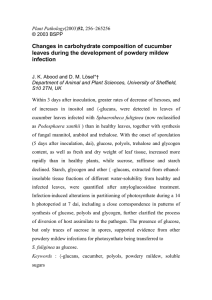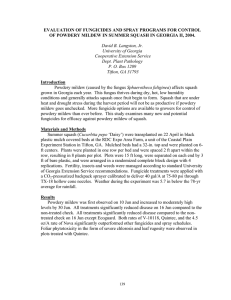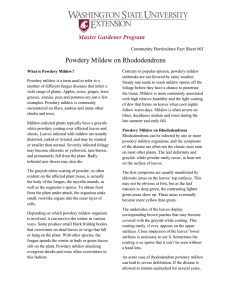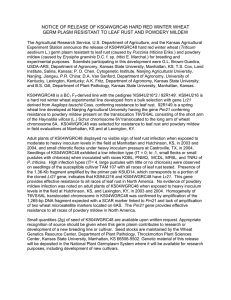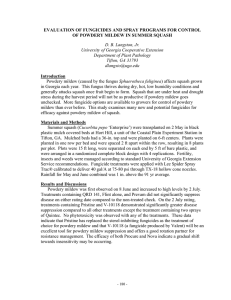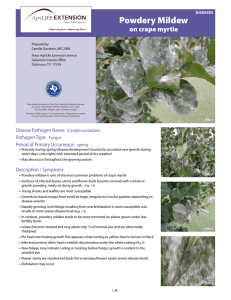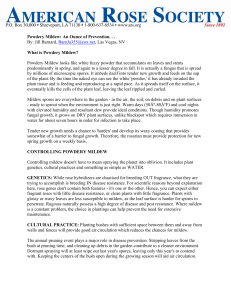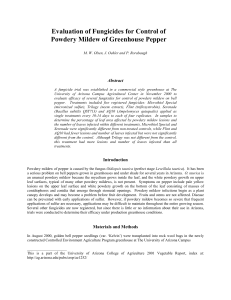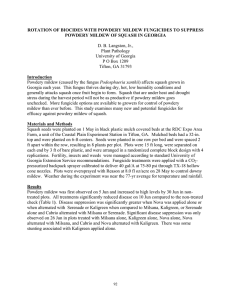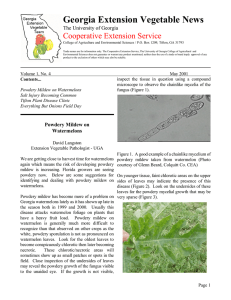Powdery Mildew - Gran-U-Lawn
advertisement
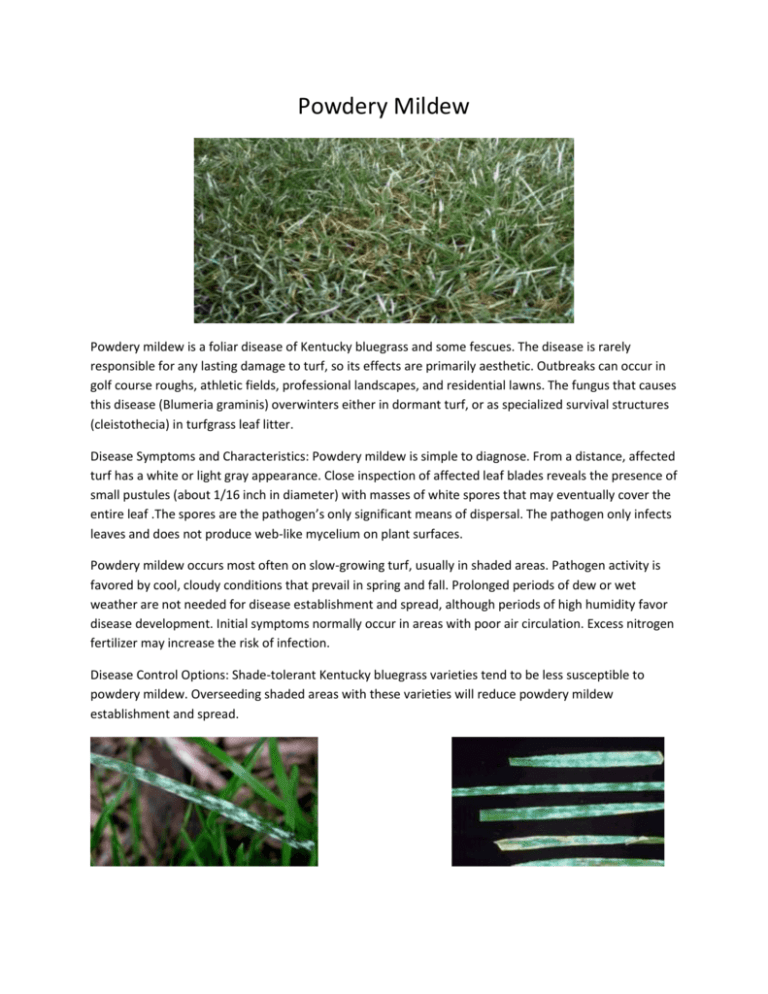
Powdery Mildew Powdery mildew is a foliar disease of Kentucky bluegrass and some fescues. The disease is rarely responsible for any lasting damage to turf, so its effects are primarily aesthetic. Outbreaks can occur in golf course roughs, athletic fields, professional landscapes, and residential lawns. The fungus that causes this disease (Blumeria graminis) overwinters either in dormant turf, or as specialized survival structures (cleistothecia) in turfgrass leaf litter. Disease Symptoms and Characteristics: Powdery mildew is simple to diagnose. From a distance, affected turf has a white or light gray appearance. Close inspection of affected leaf blades reveals the presence of small pustules (about 1/16 inch in diameter) with masses of white spores that may eventually cover the entire leaf .The spores are the pathogen’s only significant means of dispersal. The pathogen only infects leaves and does not produce web-like mycelium on plant surfaces. Powdery mildew occurs most often on slow-growing turf, usually in shaded areas. Pathogen activity is favored by cool, cloudy conditions that prevail in spring and fall. Prolonged periods of dew or wet weather are not needed for disease establishment and spread, although periods of high humidity favor disease development. Initial symptoms normally occur in areas with poor air circulation. Excess nitrogen fertilizer may increase the risk of infection. Disease Control Options: Shade-tolerant Kentucky bluegrass varieties tend to be less susceptible to powdery mildew. Overseeding shaded areas with these varieties will reduce powdery mildew establishment and spread.

